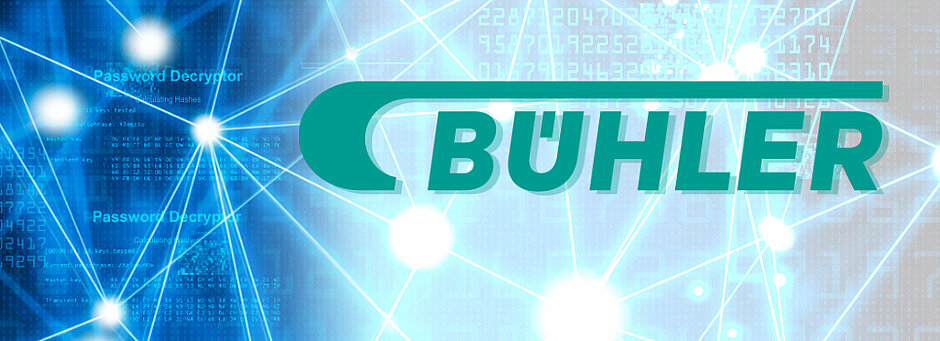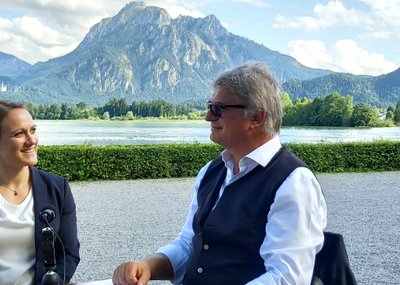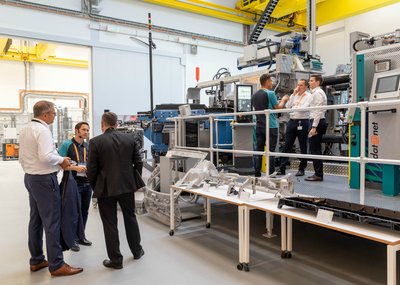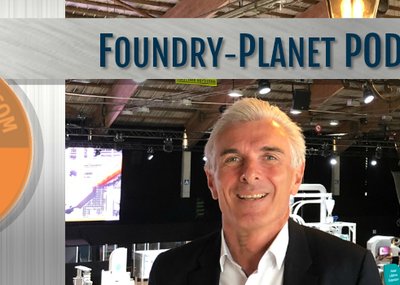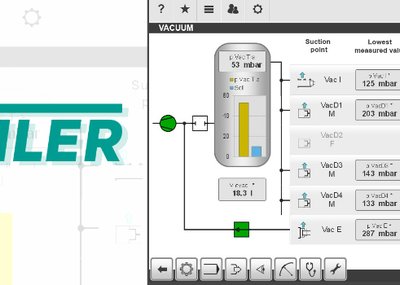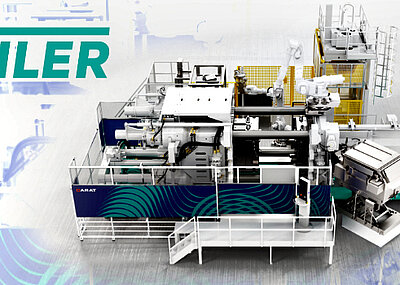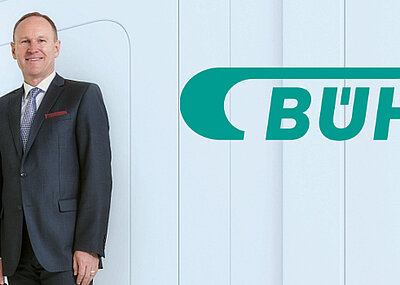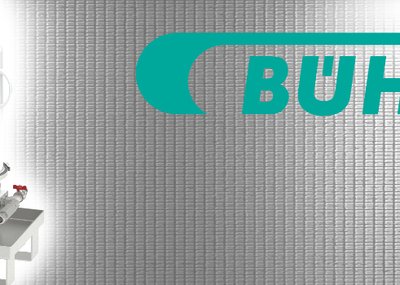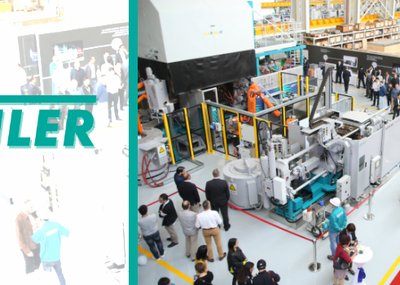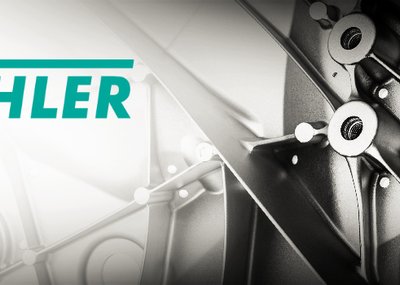Bühler Die Casting is working towards a better, more efficient and profitable future for die casters. The aim is to create an integrated die casting solution leading to a drastic reduction in the production cost of a die casting part by delivering zero scrap, providing 24-hour continuous production and reducing cycle time by 40%. That will allow higher production, for less, faster and easier.
By 2040, Bühler imagines the die casting solutions to be part of the Smart Factory, delivering more cost-effective castings with an OEE that outperforms other process technologies.
Why is this important?
Today we live in a fast and exponentially changing environment. This means that in 2023 we will have experienced the same amount of change as within the last 50 years. Of course this will also affect the die casting industry – therefore Bühler is closely observing the industry trends and working on potential scenarios and new products.
Growing cities & alternative mobility
According to an UN-study 2 out of 3 people will live in cities by 2050. This trends towards urbanization is increasing and greatly impacting on humans and the environment. Therefore new technologies to reduce CO2 emissions are fostered across the range. New production technologies and alternative production processes are changing the market and new innovative players like Byton, Faraday Future, Lucid or Tesla are entering the stage. Additionally, we see new mobility and business concepts – including shared mobility, connectivity, new infrastructure requirements up to charging stations for emobility getting more important.
Bühler's approach
Bühler is investing about 5% of the group’s turnover in research and development. Among others changes in the powertrain towards e-cars and hybrid cars are seen as essential developments on the die casting market. Therefore Bühler is currently focusing its development in the die casting sector on solutions for lightweight construction as well as on the hybridization of the powertrain, parts for chassis or e-cars. Our main focus is how the die casting process can be competitive also with competing processes such as plastic, sheet metal or 3D printing. To be ready the next years, Bühler focuses on developing the highly efficient die casting cell of the future.
Introducing the digital Cell of the future
The digital Cell of the future will be running smoothly and reliably on a continuous 24-hour production cycle, with 40% less cycle time. Zero scrap. Remarkable energy efficiency. You are imagining Bühler’s Cell of the future.
Combining more data with higher intelligence
Today, when there is a problem in the process – perhaps one of the peripherals is not working properly – the Cell may detect it, but it cannot proactively do much more than halt the process until it is fixed. The digital Cell of the future will collect more data, not only from the machine, but from all the devices in the Cell – sprayer, robot, press, oven etc. It will then use machine learning algorithms and other technologies to make smart decisions that will keep the production continuing.
Self-optimization will deliver the ultimate efficiency
The Cell will optimize itself. It will notice when something is wrong and if it can, it will solve the problem based on the available data. For example, imagine the Cell will include CT scanners, which could scan each finished part and send data back to the Cell control system. If the part appeared to be deviating from the ideal parameters, the Cell would identify the reason for that based on what it knows of the specific process, and make automatic adjustments to correct it. The Cell would not only recognize if there is something wrong with the product (e.g. if there is entrapped air); it could also do a virtual machining based on FEM (finite element method) test, reject or accept each piece based on pre-programed criteria. All of this leads to a reduced scrap rate. In the future, data points from the vacuum system, the aluminum composition, the die closing and a hundred other key processes will be analyzed every millisecond. This will enable the Cell to constantly optimize the process, ensuring continuous production, with exceptional quality, without having to intervene.
New thermal management techniques to save time
At the moment, about a third of cycle time may be taken up with thermal management processes like spraying. Introducing micro-spraying, conformal cooling from the inside of the die and control of individual cooling circuits (the water flow within the die) could significantly cut cycle times. The heating of the die, enhanced monitoring of the temperature and the thermal process is possible with infrared cameras and how this is integrated into the cell management system could also help to save time.
Built-in quality control will continue to drive product quality
All of the product quality functionality of today’s solutions, such as data visualization and product traceability will be faster, more sophisticated and more intelligent. The operators will always retain total control over the process, but the Cell will be making many of the corrective decisions required based on machine learning, constantly driving down scrap and increasing quality and efficiency.
Integrating into the Smart Factory
Of course, the digital Cell of the future won't be developed in isolation. Bühler is already committed to Smart Factory solutions, enabling the Cell to communicate with other parts of the process, from customer orders to storage and shipping. The digital Cell of the future will take this integration further. As part of the Smart Factory, the Cell of the future will be connected to the whole production system, receiving information from other areas and sending instructions to improve efficiency.
Predictive maintenance and communication to drive uptime
The intelligence at the heart of the digital Cell of the future will also drive predictive maintenance, helping to avoid costly production interruptions and achieve 24-hour production. Based on historic data and real-time data inputs, the Cell will know when its own parts (e.g. filters) are liable to be wearing out, and need to be replaced. As it’s connected to other systems in the Smart Factory, it will be able to find the optimal point in time to change oil or change a part. The Cell will automatically order spare parts and book a service engineer when required.
Clearer communication
The digital Cell of the future will keep all people informed at all times. It will give them the best possible information when there is a problem that needs an intervention. This will include a clear explanation of what to do and how to do it, minimizing the skill level and training of people needed. The digital Cell of the future will be so easy to use it does not need special training. Intuitive prompts will enable the operators reset and repair, quickly and easily. Not that they will need to intervene very often. The digital Cell of the future will be more robust and more stable. The diagnostics available today will be even more advanced, potentially correcting issues before they become a problem. Alarms, alerts and data will of course be available on any device (who knows what devices there may be), enabling decision-makers to remain fully informed, 24/7, wherever they may be.
A continuing commitment
Many of the functions described here are enhancements of the capabilities already available today. The philosophy of Bühler is one of evolution, enabling die casters to take advantage of this new technology as it emerges. This vision is part of Bühler’s continuing commitment to drive a higher OEE within the die casting process.

